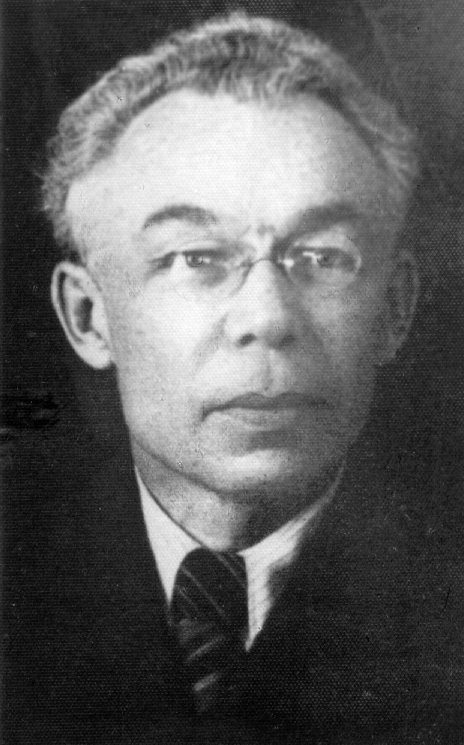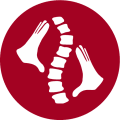8:00 - 16:30 (gmt +7)
Novosibirsk Research Institute of Traumatology and Orthopedics n.a. Ya.L. Tsivyan
History
The establishment of Novosibirsk Research Institute of Traumatology and Orthopedics dates back to the tragic years of World War II. In 1942, the book trade college building at 17 Frunze street was repurposed to house Evacuation Hospital no. 1239 with 300 beds for the wounded and injured evacuated from the Western front.


Professor Simon L. Shneider was appointed the first head of Novosibirsk Institute of Reconstructive Surgery, Traumatology, and Orthopedics (VOSKHITO, 1946-1951). Within a short time, the hospital building was retrofitted for scientific purposes, and a cadre of young and hard-working employees was formed.
The first decade of the institute’s operation was dedicated to practical aspects of surgical rehabilitation of wounded and injured war veterans. Scientific efforts were focused on reconstructive surgery, purulent osteology, osteoplastic surgery, skin grafting, and neurosurgery. At the same time, the institute maintained high standards of clinical care by employing the most competent local healthcare professionals, a lot of whom had unique military experience, still remaining relevant even in the current hi-tech age.
During the next decade, the institute’s operation became more multifaceted. The Ministry of Healthcare of the Russian SFSR envisaged the institute as a training facility for the Department of Orthopedics and Traumatology of Novosibirsk Medical Institute for Further Training of Physicians. The institute was also entrusted to function as a regional hospital for disabled WWII veterans in the Novosibirsk Region and provided curation and organizational and methodological guidance for setting up orthopedic, traumatological, and physiotherapeutic care for disabled WWII veterans in the city of Novosibirsk and the surrounding regions, i.e. the Novosibirsk, Tomsk, Kemerovo, Omsk, and Tyumen Regions, as well as Altai and Krasnoyarsk Krai.

Associate professor Dmitriy P. Metelkin became the next head of the Institute in 1951 and held this position for the next 19 years (1951-1970). Once the post-war needs became less pressing, a new stage in the history of the Institute began that revolved around the peace-time issues of traumatology and orthopedics and organizational improvement of the West Siberian orthopedic and traumatological service. As per the Order of the Ministry of Healthcare of the Russian SFSR no. 125-m of August 12, 1957, the Institute was renamed as Novosibirsk Research Institute of Traumatology and Orthopedics of the Ministry of Healthcare of the Russian SFSR (NIIТО).

In 1957, Interregional Center for Poliomyelitis Control in West Siberia attached to the Institute and headed by professor N.S. Andrushko was established. Its facilities were later used to set up Center for Child Disability Management in 1973.
This was the time when tendencies toward specialization started to manifest themselves. Key directions of research were identified, and scientific schools started to crystallize. Two of them later defined the future evolution of the Institute. Professor Kseniya I. Kharitonova, who headed it for 16 years, is justly recognized as the founder of a neurosurgery scientific school.
In her years as the head of the Institute, Prof. Kharitonova pursued the development of scientific research in neurosurgery, traumatology, and vertebrology, as well as the expansion of experimental and clinical facilities of the Institute, and introduction of research results into healthcare practice.
K.I. Kharitonova, Director of the Institute from 1970 to 1986.
- Employee of the Institute from 1946 to 1993;
- Head of the Neurosurgical Department for 30 years (from 1955);
- Reorganized and expanded experimental and clinical facilities of the Institute;
- Founded the Siberian Neurosurgical Service (Interregional Neurosurgical Center) and supervised its operation;
- Stimulated scientific research in neurosurgery, traumatology, and vertebrology, and supported the introduction of research results into healthcare practice;
- Headed the research regarding the epidemiology of craniocerebral injuries in major industrial cities, the pathogenesis of severe craniocerebral trauma, and improvement of clinical outcomes;
- Author of about 200 scientific papers and 4 monographs;
- Scientific mentor of 3 doctors and 23 candidates of medical sciences.
Professor Yakov L. Tsiv’yan was the founder of a scientific school of vertebral surgery.

Ya.L. Tsiv’yan worked for the Institute from 1946 to 1987 and occupied the position of Deputy Director for Science from 1964 to 1972;
- Headed the Department of Traumatology and Orthopedics at Novosibirsk State Medical Institute with training facilities at Novosibirsk NIITO;
- Developed highly effective surgical procedures for various spinal pathologies, including disorders and injuries of various localizations both uneventful and complicated by spinal cord trauma. Those included multiple variations of ventral fusion for vertebral column injuries, segmental vertebrotomy for Scheuermann’s disease and congenital spinal deformities, corrective vertebrotomy for Bekhterev’s disease, multiple variations of ventral fusion for kyphotic and kyphoscoliotic spinal deformities;
- Justified the most rational approaches to different regions of the spine;
- Inventor of the first hip implant in the USSR and Tsiv’yan-Ramikh compression bracket;
- Author of over 20 monographs, about 500 scientific papers, and 25 technical improvement proposals;
- Scientific mentor of 12 doctors and over 50 candidates of medical sciences.
In these years, scientific efforts were focused on spinal pathology, pediatric and adolescent orthopedics, neurophysiology, neurosurgery, pediatric and adolescent scoliosis surgery, laboratory experiments and immunological research, and tissue conservation.

In the late 1980s, the Institute was on par with similar establishments. It produced the required amount of papers and contributed accordingly to applied healthcare. Economic reforms brought radical changes. However, even despite the material supply and financial shortcomings of the 1980s and 1990s, the Institute continued its research work thanks to the high professional standards of its researchers. During the period of economic reforms, the Institute was headed by Prof. Nikolai G. Fomichev.
N.G. Fomichev, Director of the Institute from 1986 to 2006.
- Completely reorganized the Institute and introduced a new clinical infrastructure making it possible to provide the level of care matching the international standards of the time;
- Established the Republican Center of Vertebrology attached to the Institute in 1987 renamed as the Center for Spinal Pathology of the Ministry of Healthcare of the Russian Federation in 1999;
- Established the Regional Center of Major Joint Replacement Surgery attached to the Institute in 1993;
- Validated vertebrology as a new clinical discipline and developed the system of specialized vertebrological care;
- Introduced advanced technologies into spinal surgery, including Dynesys and CDI systems, transpedicular fixation, porous titanium nickelide implants, and endoscopic surgery;
- Founded the Spinal Surgery journal;
- Transformed the dissertation council (from candidate to doctoral degree) for the fields Traumatology and Orthopedics and Neurosurgery;
- Opened a subsidiary in Altai Krai;
- Formed a reliable scientific partnership with leading foreign clinics;
- Organized proprietary manufacturing of metal implants and hardware;
- Ensured the reception of the international certificate of compliance of the quality management system to the ISO 9001:2001 international standard of providing therapeutic and preventive traumatological, orthopedic, and neurosurgical care to adults and children;
- Author of 180 papers, 7 monographs, and 15 patents;
- Scientific mentor of 12 doctors and 17 candidates of medical sciences.
The late 20th century was characterized by a rapid development of various branches of medicine. Introduction of new diagnostic radiology techniques, endoscopic tools and premium laboratory equipment made it possible to redefine the goals of research transcending the boundaries of applied healthcare. Extensive cooperation with Novosibirsk State Medical University and Research Institutes of the Siberian Branch of the Russian Academy of Medical Sciences benefited the Institute greatly and promoted its staff to the leading positions. The Institute’s heritage carefully preserved through decades made it possible to develop a new branch of clinical medicine and make vertebrology a universally recognized discipline.
In 2006, professor Mikhail A. Sadovoy was appointed the Director of the Institute.

M.A. Sadovoy, Director of the Institute from 2006 to 2018
- Developed the system of preventive pediatric vertebrology;
- Developed and successfully introduced the innovation pipeline in medical and managerial technologies;
- The first in the country to successfully introduce a quality management system in a medical institution;
- Opened subsidiaries in Kemerovo and Chita Regions and Krasnoyarsk and Altai Krai;
- Introduced the new specialty ‘Healthcare management and public health’ to the dissertation council;
- President of the Russian Association of Vertebrology Surgeons;
- Proponent of applying for the status of reference clinic of AOSpine in 2012;
- Founder of the scientific school of Organizational and Clinical Aspects of Vertebrology;
- Active proponent of naming the Institute after the founder of the scientific school of vertebral surgery Ya.L. Tsiv’yan in 2013 (Order of the Russian Ministry of Healthcare from April 24, 2013 no.256);
- Author and co-author of over 300 papers, including 10 monographs and textbooks, and 7 patents;
- Scientific mentor of 8 doctors and 19 candidates of medical sciences.

In October 2019, Andrei A. Korytkin, Ph.D., author of over 15 patients and over 50 scientific papers, member of American Association of Orthopedic Surgeons (AAOS), American Association of Hip and Knee Surgeons (AAHKS), European Hip Society (EHS), Russian Hip Society, and Association of 3D Printing Specialists in Medicine was appointed to head the Institute. His scientific interests include reconstructive surgery and primary and revision hip and knee replacement.
Today, the Institute remains an example of successful development and advancement.


